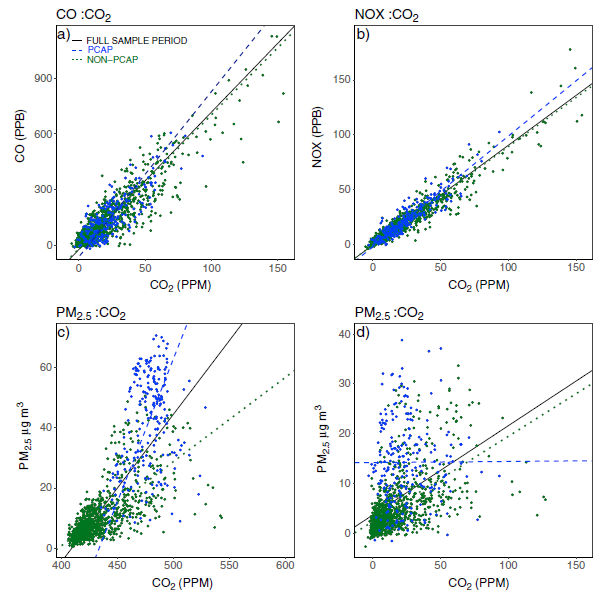Examining relationships between trace gases and criteria pollutants during winter in a mountain valley
In order to protect public health, the United States Environmental Protection Agency (EPA) has established national ambient air quality standards for six of the most common air pollutants—carbon monoxide, lead, ground-level ozone, particulate matter, nitrogen dioxide and sulfur dioxide—known as “criteria air pollutants”. The presence of these pollutants in ambient air is generally due to numerous diverse and widespread sources of emissions.
In order to protect public health, the United States Environmental Protection Agency (EPA) has established national ambient air quality standards for six of the most common air pollutants—carbon monoxide, lead, ground-level ozone, particulate matter, nitrogen dioxide and sulfur dioxide—known as “criteria air pollutants”. The presence of these pollutants in ambient air is generally due to numerous diverse and widespread sources of emissions.
A recent publication (attached) in the Journal of Geophysical Research reported the scientific work by a group of environmental scientists from University of Utah who closely examined the relationships between trace gases and criteria pollutants in Utah’s Salt Lake Valley. In particular they studied the relationship between excess CO2 -above baseline conditions- and other pollutants during various stages of particulate pollution episodes (no/during/after pollution). The work was performed in winter over 2 months, with a special focus during a week when cold air pools inhibited atmospheric mixing and enhanced pollutants accumulation. Various greenhouse gases and criteria pollutant measurements were performed from sample inlets situated at 33m above the ground. An LGR Ultraportable Greenhouse Gas Analyzer was used to measure CO2 and CH4 concentrations.

Cities are responsible for 70% of anthropogenic CO2 emissions globally. There is an ongoing global effort to measure CO2 in urban areas and master the processes controlling carbon emissions. The aim of the survey was to analyze relationships between urban CO2 concentrations and air pollutants in order to better understand transport and chemical processes during various meteorological conditions. The authors found that the excess CO2 is a good indicator (proxy) of the presence of co-emitted gaseous criteria pollutants and a reasonable indicator of fine particulates PM2.5. They also observed that the relationships between CO2 and criteria pollutants differ during different phases of cold air pool events which provide insight into meteorological and transport processes.
Other articles:
- Palas AQ Guard series launched
- VMM chooses for TAPI-400 O3 monitors again!
- Droplet's Mini Micro Pulse LIDAR
- ISSeP chooses Tekran again
- Cloud, aerosol and precipitation spectrometer with depolarization
- Monitoring low levels of formaldehyde in ambient air
- New carbon dioxide isotope analyzers
- Cloud Condensation Nuclei (CCN) counter
Stay informed? Sign up!
Register yourself for our meetings and trainings. For more details please click on the event you are interested in.Questions? Please ask!
We are happy to answer all of your question, you can even send it online via our contactpage.Contact us